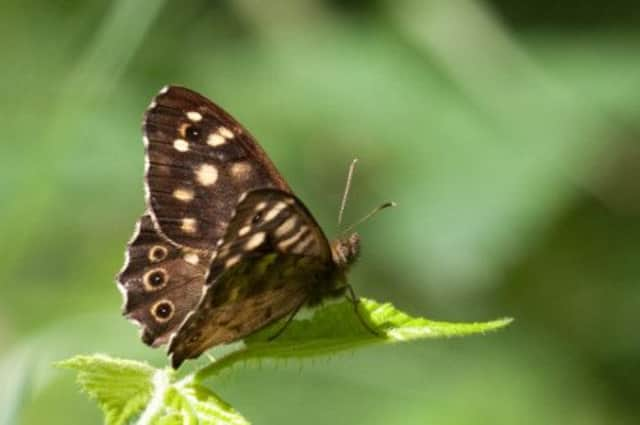Butterfly spreading its wings as climate changes


Records collected by Butterfly Conservation Scotland have revealed that the speckled wood has expanded from isolated populations in the Moray Firth and the west coast this summer across the rest of the country at speeds not seen among other species of butterflies.
While the rate of butterfly populations extending their range has previously been recorded at a few kilometres a year, the new data suggests that the speckled wood is moving more quickly.
Advertisement
Hide AdAdvertisement
Hide AdThe eyecatching and combative insect is also expanding in more directions, spreading rapidly into the Central Belt from the west, south-east, south-west and north (including some insects flying from England and Northern Ireland).
Specialists said it marked a welcome return for the speckled wood, which was found in most parts of Scotland centuries ago before the climate became colder, forcing it to take refuge in a few relatively “warm” refuges.
Paul Kirkland, director of Butterfly Conservation Scotland, said: “We have not got detailed figures yet but indications are that the speckled wood is spreading faster than any other butterfly at the moment. It is moving very quickly in a number of directions.
“We thought that it might take ten years to become established in the Central Belt, but at this rate it will happen in the next couple of years.”
He added: “We tend to assume that these sorts of changes are down to climate change. It’s hard to think of any other explanation.”
The spread of speckled woods is the latest indication of climate change to be seen in Scotland, which saw record temperatures over the summer months.
Scottish Natural Heritage (SNH) agreed that global warming was probably the cause of the changes recorded in butterfly populations.
Athayde Tonhasca, an invertebrate specialist at SNH, said: “In the specific case of the speckled wood butterfly, its range in Britain has expanded since records began in 1915, and it has indeed spread out significantly in Scotland since the 1970s. These changes are likely [to have been] caused by climate change.”
Advertisement
Hide AdAdvertisement
Hide AdHe added: “Climate warming is the likely cause for some European butterflies shifting their ranges northward, as well as the reason why some European butterflies have now entered the UK. There’s also evidence that climate change is responsible for seasonal changes in life cycle events of many plants and invertebrates.”
Speckled woods favour sunny glades in forests, as their name suggests, and have distinctive false eyes on their wings.
Males will aggressively guard their territory by circling up into the air and clashing their wings together to fight for the sunniest spot, which they need to lure females to mate.
Mr Kirkland explained: “Each male occupies a patch of sunlight and they do this amazing spiralling motion when challenged by another male. Both of them spiral upwards close to each other beating their wings.”